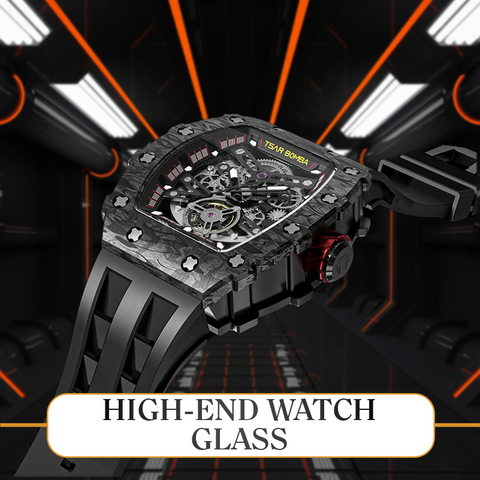5 Actionable Tips On Stainless Steel Waterproof Watch
Every individual has a special connection to their watch. Different people have different preferences when it comes to looks. Consequently, rather than defining what constitutes a "good" or "poor" watch, we'd want to discuss the characteristics that define a high-quality timepiece as well as how obvious these clues are to spot.
#Tip 1: WHAT MATERIALS A WATCH SHOULD HAVE?
At the very least, a good stainless steel waterproof watch is constructed of stainless steel. Although timepieces made of titanium or ceramic are stronger, they are also more costly. Unlike "regular" steel, stainless steel is unaffected by moisture and sweat. Additionally, wearing a stainless steel watch is unlikely to cause skin irritation.
A PVD coating is necessary to maintain the color of gold, rose gold, silver, or black watch. If used often, a watch without a covering may get discolored after a year. On the back of a watch, the materials that were utilized are often visible. Note that the phrase "stainless steel (watch) back" solely refers to the watch back.

#Tip 2: WHAT KIND OF WATCH GLASS DO YOU USE?
Sapphire crystal is a must-have for every high-end watch. Obviously, it is dependent on the nature of the watch's intended use. Even after repeated (violent) usage, sapphire glass keeps its luster and resists scratches. The typical watch just needs leaded crystal or mineral glass.
Additionally, a wristwatch with this type of glass is typically less expensive, but it is also more easily scratched. The sapphire crystal material used will be indicated on the watch face or case back.
#Tip 3: WHICH WATCH MOVEMENT IS CONSIDERED THE BEST?
A certified mechanical (COSC) or quartz movement is at the heart of every high-quality, reasonably priced timepiece. Quartz movements (Battery operated watches) are the norm for quality timepieces for under $400. Quartz has fewer moving components, which is a huge benefit. This improves the precision and accessibility of timepieces.
Miyota, Seiko, and Ronda are the three most common watch movements used by high-end watchmakers. Time and again, consumers have found success with these products. They are well-liked due to their long lifespan and reasonable price. Providing they are cared for appropriately, these mechanisms may last for decades.
#Tip 4: A WATCH'S PROTECTION AGAINST WATER?
Any watch that can withstand 10 ATM of water pressure is considered to be of high grade. Water is the single greatest enemy of a watch. Therefore, a reliable watch must be watertight. The water resistance comes in a spectrum, much like the materials and mechanisms it protects.
Water resistance of 10 ATM indicates that the watch can withstand pressure equal to 100 meters (10 bar). As a result, it is an excellent timepiece for swimming. Five ATMs, which are equivalent to a shower, and three ATMs, which are equivalent to washing your hands, are also water-resistant levels. A watch has to be waterproof to at least three atmospheres of barometric pressure for wearers to feel at ease. In addition, the rear of the watch is often marked to show its level of water resistance.

#Tip 5: BUDGET-FRIENDLY WATCHES HAVE STUNNING FINISHES?
A fine watch also has a great finish, in addition to the aforementioned qualities. This is the dividing line between a low-cost and a reasonably priced timepiece. It ought to be welcoming, with a high standard of comfort and quality. All of the parts need to come together to make an appealing whole. Do you not see any humps, loose indexes, or other signs of shoddy construction? Then we may also discuss how a high-quality watch seems.
In The End
Please spend a few seconds researching the stainless steel waterproof watch brand. Learn about all of the best timepieces for men.











